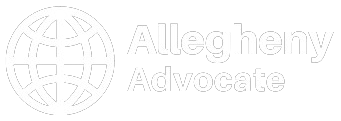Omaha, along. (AP) – Dozens of radio stations of the American indigenous people across the country, which are of crucial importance for tribal communities, is that, according to industry leaders, the congress shortens more than 1 billion US dollar from the Society for Public Radio.
This week, the US Senate will vote on whether the Ministry of Government Efficiency is due to previously approved public broadcasting financing for 2026 and 2027. The fear grows that most of the 59 tribe radio stations that receive the funds will become gloomy and deprive of isolated populations of news, local events and critical weather warnings. The house has already approved the cuts last month.
(*1*) said Francene Blythe-Lewis, CEO von Lincoln, in Nebraska-based vision maker Media, in Nebraska. “If the claw happens back, I would say that 90% of these stations stop.”
Indian communities rely on local radio stations
Local radio plays an oversized role in the life of many who live in indigenous communities, in which cable television and broadband internet access for many at best existed. As a result, television channels remain a PBS station and more local radio in the air traffic-to provide local news, details about the event and music of indigenous artists. Sometimes the news is transmitted into local languages.
“It means that we won’t hear our language on the radio,” said Blythe-Lewis.
Local public media in Flagstaff, in Arizona -based public media, which supports the network of 59 radio stations and three television stations for trunk countries across the country, said, about three dozen of this radio station, which will be gloomy for the first time on October 1, which will be gloomy on October 1st.
Loris Taylor, CEO of Native Public Media, said in an OP-ED that the tribal stations reach more than 1.5 million people and “may be the only source for locally relevant messages, emergency warnings, announcements for public security, language maintenance, health information and election reports.”
The Republicans are exposed to pressure to pass the cuts
GOP senators are under pressure President Donald Trump, who promised last week on his social platform that every Republican who is against the cuts will not have my support or confirmation.
Many Republicans say that the public media system is politically biased and unnecessary costs. Senator Eric Schmitt, a Republican from Missouri, recently defended the cuts to dismantle the public debt of almost 37 trillion dollars, and added: “It is vital to restore confidence in the government.
But some Republicans have pushed back, like Maine Sen. Susan Collins, who questioned the proposed cuts last month during a hearing from the Senate Committee. She said that part of the federal government is assigned money to the national public radio and the public broadcasting system, most of them go to local public radio and television channels.
Tribal stations offer life -saving warnings
Jaclyn Sallee is President and CEO of the Koahnic Broadcast Corporation and Knba, his radio station in Anchorage, Alaska. Koahnic produces national native news, a five-minute daily news program with headlines from the Indian country, and the Native America Calling, a daily hourly rall program, for around 190 stations across the country. It also produces indigefi, a music program in indigenous languages.
KNBA is on the list of the stations of the local public media, which would be most affected by the federal financing cuts – a concern that Sallee confirmed, since 40% of the financing of the CPB station came.
“What we are really concerned are the rural stations in Alaska, where they may be the only stop in the community,” she said. “The people who live there depend on the station for vital weather warnings, emergency warnings. It is the local center of the community, in which people share information.
It is currently the fishing season in Alaska, she said, “which means to get out in the sea or in rivers and live long distances to leave and they really rely on weather reports.”
If the news is reported in the language of a tribe, it’s not just about preserving this language, she said. Sallee spent summer in Nome with her mother’s family. Her grandmother, she said, only spoke inupiaq.
The loss of petite stations could affect the larger system
The signal from New Mexico PBS reaches all of the more than 20 tribes and Pueblos in the state. It has also signed an agreement with the Navajo Nation that has the greatest reservations of every tribe in the United States that enables the tribe to wear the PBS signal and programming the television station Navajo Nation, said New Mexico PBS General Manager Franz Joachim.
“In my head, there is no question that some stations will become dark immediately,” said Joachim.
If these first stations fail, it won’t take long for others to follow, said Joachim. And so this means that fewer and fewer stations are left to pay membership fees that also assist finance all stations.
“Now the whole system begins to break,” he said. “For me, federal financing is really about the system as a whole that keeps us in place.”
This financing also helps to produce national content that produce groups such as Vision Maker Media. This includes documentaries of the American indigenous people, which were shown on PBS like “Mankiller”, the story of Wilma Mankiller, who became the first woman as the head of the Cherokee Nation.
Bythe-lewis compared the potential loss of tribal stations with the past attempts in the country to extinguish the cultures of the American indigenous people, for example by federal rate on which indigenous children were sent for generations in order to integrate them into white society and in which systemic abuse of indigenous children was carried out.
“We are deleted from public media and therefore invisible and are therefore unknown and unknown,” she said.

